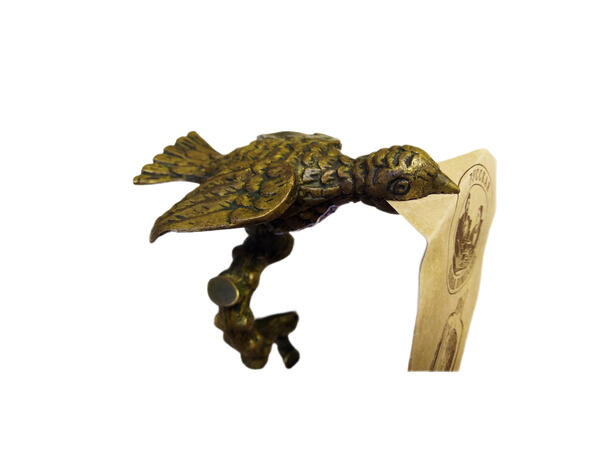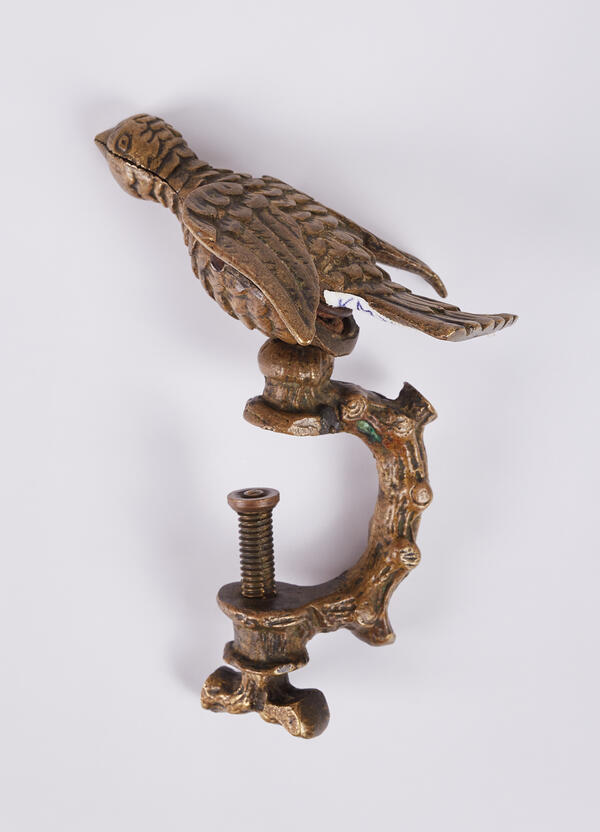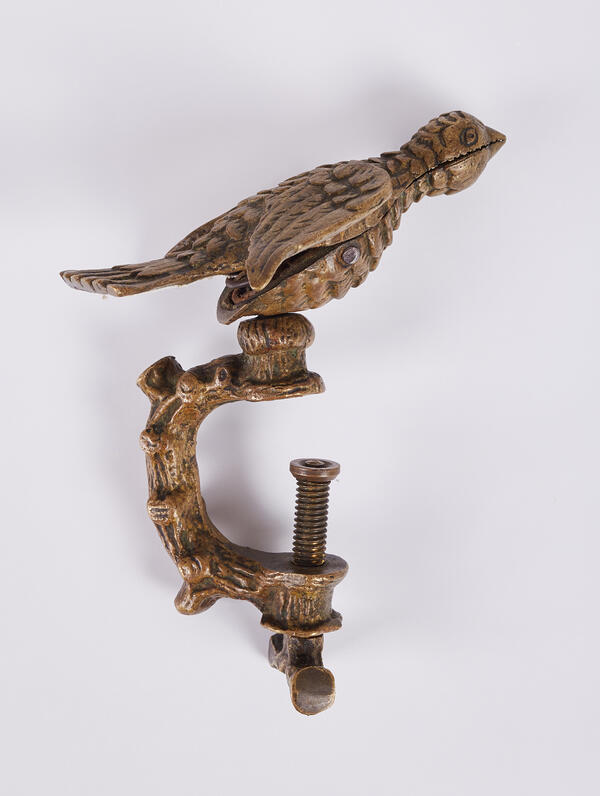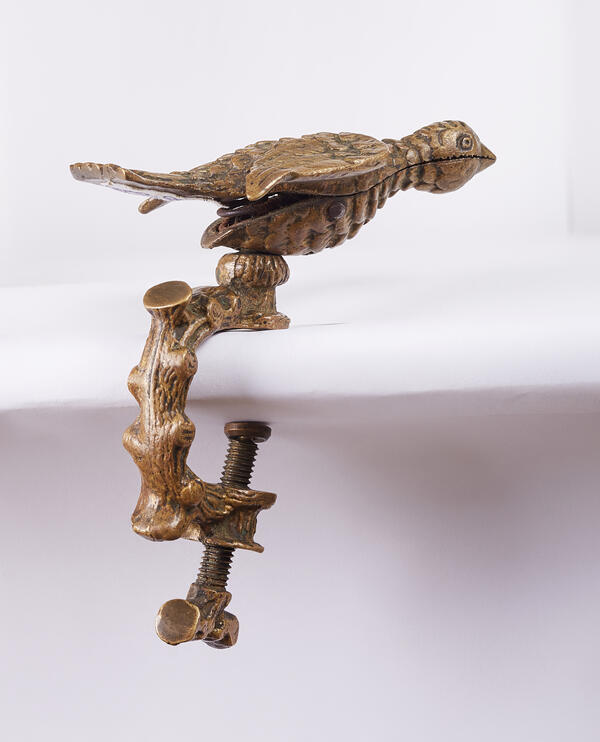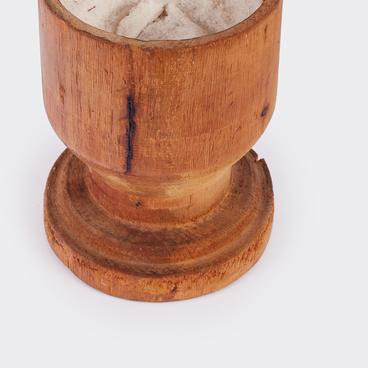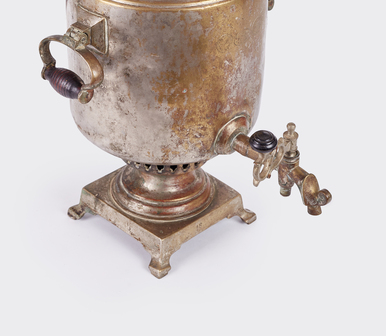The Zheleznodorozhny Local Lore Museum presents a binder clip “Dove”, made in 1910 by the handicraftsman Ivan Sergeyevich Kolomin.
A special mechanism ensures that the bird’s beak closes tightly, securing any paper documents. The mechanism is activated by pressing the tail. The exhibit can be attached to any horizontal surface using a clamping device (the foot).
The ancestors of binder clips were pins and paper clips. These accessories appeared almost two decades apart from each other. Paper clips were the first to come around in 1890 when a wire spring was used to hold papers together. Its more familiar form was patented nine years later by the Norwegian engineer Johannes Hvaler, who developed several types of paper clip designs. The idea for a binder clip came to the 15-year-old Louis Baltzley, who wanted to help tidy up the desk of his father who was a writer. He came up with an accessory capable of holding together about a hundred sheets of paper at a time and patented it in 1910. Although the design of binder clips has changed many times over the last hundred years, the way they work is still the same.
Doves occupy a prominent place in works of
painting, graphics, sculpture and decorative arts. The image of this bird
played an important role in Slavic culture long before the advent of writing
and retained its significance in the Christian period. In olden times, there
were many tabernacles (church utensils in which the Eucharist is stored) shaped
like a dove, which symbolizes the Holy Spirit. Moreover, in the recent past,
people used pigeons as a means of communication, given that this bird has an
outstanding homing ability, that is, it will always return to its nest. This
innate quality has long been used to deliver messages by pigeon post. It is
likely that carrier pigeons inspired the handicraftsman to create an unusual
item — a binder clip shaped like the most common bird on the planet.

